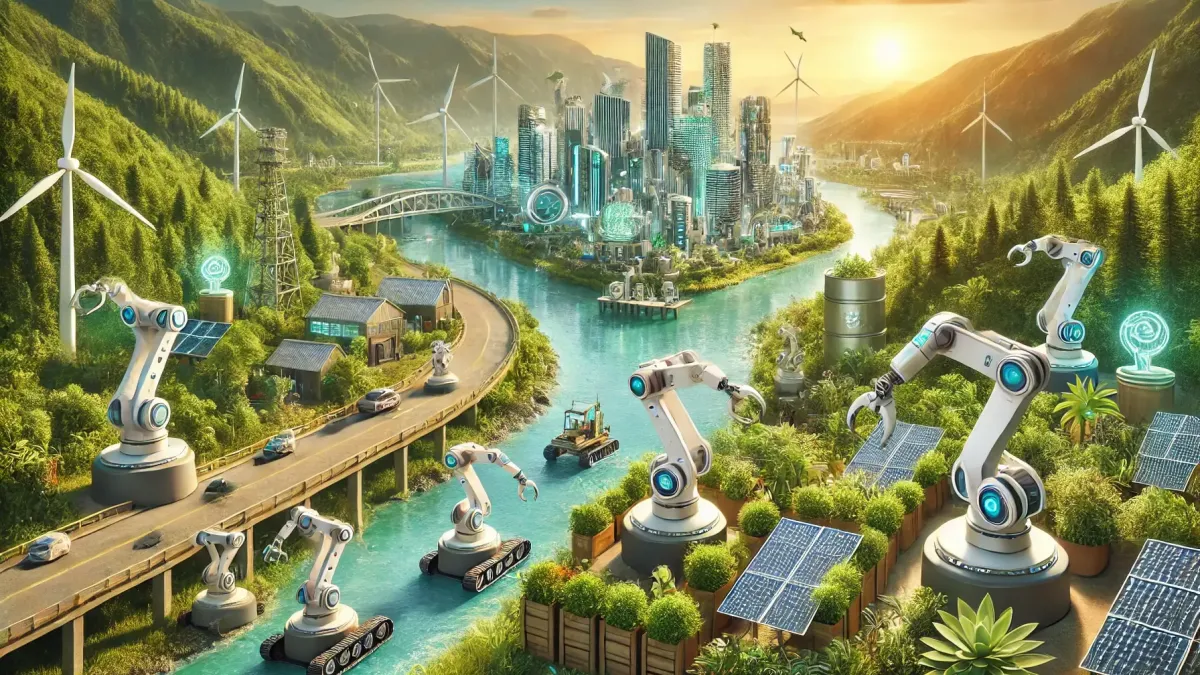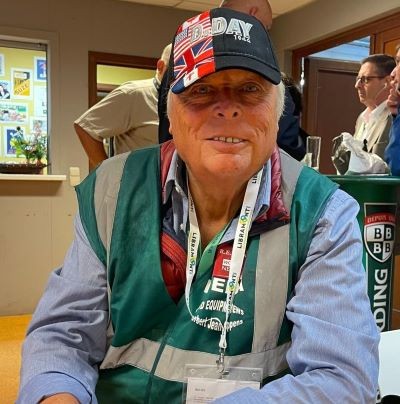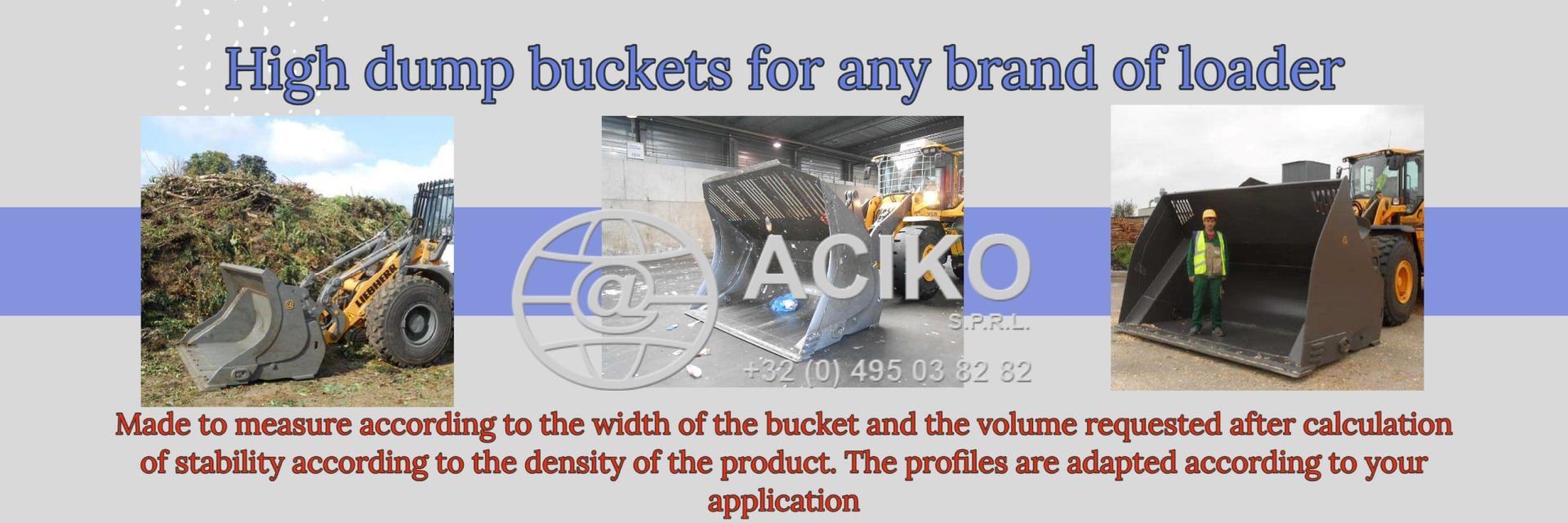R.E.News future Technology-Transforming Infrastructure and Nature with Sustainable Robotics
 28/11/24-FR-English-NL-footer
28/11/24-FR-English-NL-footer
Transformer les infrastructures et la nature grâce à la robotique durable
 Image R.E.News- Empa, the Swiss Federal Laboratories for Materials Science and Technology.
Image R.E.News- Empa, the Swiss Federal Laboratories for Materials Science and Technology.
La scène mondiale est définie, les défis environnementaux se multiplient et les exigences en matière d’infrastructures sont de plus en plus complexes. Alors que le monde se bat pour équilibrer durabilité et développement, la robotique est devenue un acteur essentiel de cet équilibre.
Le DroneHub du NEST (Next Evolution in Sustainable Building Technologies), un centre de recherche et d’innovation pionnier exploité par l’Empa, le Laboratoire fédéral suisse pour la science des matériaux et la technologie, est à la tête de cette charge.
Cette installation est plus qu’un simple laboratoire : c’est un terrain d’essai pour les drones bio-inspirés de pointe et les technologies robotiques conçues pour vivre de manière autonome, collecter des données critiques et effectuer des actions réparatrices dans les environnements bâtis et naturels.
Cette initiative révolutionnaire est issue d’une collaboration entre l’Empa et l’Imperial College de Londres, dirigée par le professeur Mirko Kovac, un pionnier de la robotique aérienne. En 2019, Kovac a établi le partenariat Imperial-Empa, favorisant une vision commune de la robotique des infrastructures et de la gestion des écosystèmes. Le DroneHub occupe désormais le devant de la scène avec la nouvelle chaire conjointe de robotique durable de l’Empa et de l’EPFL (École Polytechnique Fédérale de Lausanne), qui renforce le rôle du DroneHub en tant que pierre angulaire de la recherche et du développement.
La directrice de l’Empa, Tanja Zimmermann, résume bien l’importance de cette initiative : « L’ouverture de cette nouvelle plateforme de recherche au NEST est non seulement une étape importante dans la recherche sur les drones, mais aussi un témoignage fort de l’importance des collaborations de recherche, comme le partenariat entre l’Empa et l’Imperial College de Londres, que nous prolongerons officiellement lors de la cérémonie d’ouverture. »
Réinventer la robotique pour les infrastructures et la nature
La vision de Kovac pour les drones va au-delà de leurs rôles conventionnels. Il les voit comme « un système immunitaire pour l’environnement », capable de tâches de haute précision comme la réparation de fissures structurelles ou la restauration écologique.
Cette vision ambitieuse positionne les drones comme des outils indispensables pour relever des défis urgents tels que la perte de biodiversité, le changement climatique et la durabilité urbaine.
Au DroneHub, ces idées sont mises en pratique dans trois environnements spécialisés :
Zone de fabrication additive aérienne : un banc d’essai pour les capacités d’impression 3D des drones pour réparer les infrastructures.
Environnement de biosphère : un espace pour étudier les robots autonomes et biodégradables et la surveillance de la biodiversité.
Système de façade de bâtiment : une plateforme pour explorer comment les drones peuvent s’intégrer à l’architecture pour une maintenance autonome et une intervention d’urgence.
La zone de fabrication additive aérienne est tout simplement révolutionnaire. Ici, les drones équipés de la technologie d’impression 3D réparent les infrastructures à l’aide d’éléments muraux interchangeables. La nature extérieure de cette zone permet des tests en conditions réelles, exposant les drones au vent, aux turbulences et à d’autres variables environnementales. En simulant des défis réels, les chercheurs peuvent affiner ces technologies, en s’assurant qu’elles sont prêtes à être déployées dans des conditions imprévisibles.
Au-delà de la validation technique, cet espace pourrait remodeler les pratiques de maintenance dans le secteur de la construction, en réduisant les coûts, en améliorant la sécurité et en réduisant considérablement l’empreinte carbone associée aux méthodes traditionnelles.
Dans l’environnement de la biosphère, l’innovation prend son envol, littéralement. Des robots inspirés de la nature sont testés pour leur capacité à naviguer de manière autonome dans les écosystèmes. Ce qui rend cette zone unique est l’accent mis sur les matériaux biodégradables. Une fois que ces robots ont terminé leurs tâches, ils se dégradent sans danger, ne laissant aucune empreinte environnementale.
Il est intéressant de noter qu’une partie de cette biosphère sert également de serre pour les « robots bio-hybrides ». Ces machines expérimentales associent des matériaux vivants, comme des plantes, à la robotique, reliant la biologie et la technologie. De telles avancées pourraient redéfinir la façon dont les robots interagissent avec leur environnement, offrant de nouvelles façons de surveiller les écosystèmes et de promouvoir la biodiversité.
La façade du bâtiment du DroneHub est une autre innovation clé. Conçue pour explorer la manière dont les drones peuvent fonctionner dans le cadre de l’infrastructure d’un bâtiment, cette zone met en évidence leur potentiel dans les scénarios d’urgence. Imaginez un drone de lutte contre les incendies qui entre en action pendant un incendie, naviguant dans des environnements dangereux pour transmettre des informations critiques ou effectuer des tâches vitales.
En créant des robots capables de travailler aux côtés des humains, le DroneHub ouvre la voie à un avenir où la technologie ne se contente pas de coexister avec l’humanité, elle améliore notre vie quotidienne.
La mission globale du DroneHub est claire : accélérer le développement de systèmes robotiques en harmonie avec la nature tout en répondant aux objectifs mondiaux de durabilité. Il ne s’agit pas seulement de créer des robots plus intelligents, mais de repenser la manière dont la technologie interagit avec notre monde.
En encourageant la recherche qui allie compréhension écologique et innovation technologique, le DroneHub résout non seulement les problèmes d’aujourd’hui, mais jette également les bases d’un avenir plus durable.
Façonner un avenir de possibilités
Le DroneHub ne se résume pas aux drones, il s’agit de redéfinir notre relation avec la technologie. En repoussant les limites du possible, cette initiative illustre comment l’innovation, la collaboration et la durabilité peuvent s’unir pour relever les défis les plus urgents du monde.
Avec sa vision audacieuse et son potentiel transformateur, le DroneHub ouvre la voie à un avenir où la robotique ne se contente pas de soutenir l’humanité, elle l’élève.
NJC.© Info Empa, the Swiss Federal Laboratories for Materials Science and Technology.
---------------------------------------------------------------------------------------------------------------
 28/11/24-English
28/11/24-English
Transforming Infrastructure and Nature with Sustainable Robotics
 Image R.E.News - Empa, the Swiss Federal Laboratories for Materials Science and Technology.
Image R.E.News - Empa, the Swiss Federal Laboratories for Materials Science and Technology.
The global stage is set, environmental challenges are mounting, and infrastructure demands are growing increasingly complex. With the world grappling to balance sustainability with development, robotics has emerged as a critical player in this balancing act.
Leading the charge is the DroneHub at NEST (Next Evolution in Sustainable Building Technologies), a pioneering research and innovation centre operated by Empa, the Swiss Federal Laboratories for Materials Science and Technology.
This facility is more than just a laboratory—it’s a proving ground for cutting-edge bio-inspired drones and robotic technologies designed to live autonomously, gather critical data, and perform restorative actions in the built and natural environments.
This revolutionary initiative stems from a collaboration between Empa and Imperial College London, driven by Professor Mirko Kovac, a trailblazer in aerial robotics. In 2019, Kovac established the Imperial-Empa partnership, fostering a shared vision for infrastructure robotics and ecosystem management. Now, the DroneHub takes centre stage as Kovac assumes a new joint professorship in Sustainability Robotics between Empa and EPFL (École Polytechnique Fédérale de Lausanne), cementing the DroneHub’s role as a cornerstone for research and development.
Empa director Tanja Zimmermann aptly sums up the significance of this venture: “The opening of this new research platform at NEST is not only a significant milestone in drone research but also a strong testament to the importance of research collaborations, such as the partnership between Empa and Imperial College London, which we will officially extend during the opening ceremony.”
Reimagining Robotics for Infrastructure and Nature
Kovac’s vision for drones goes beyond their conventional roles. He sees them as “an immune system for the environment,” capable of high-precision tasks like repairing structural cracks or engaging in ecological restoration.
This ambitious outlook positions drones as indispensable tools for addressing pressing challenges such as biodiversity loss, climate change, and urban sustainability.
At the DroneHub, these ideas are put into practice through three specialised environments:
Aerial Additive Manufacturing Zone: A testbed for drones’ 3D printing capabilities to repair infrastructure.
Biosphere Environment: A space for studying autonomous, biodegradable robots and biodiversity monitoring.
Building Façade System: A platform to explore how drones can integrate with architecture for autonomous maintenance and emergency response.
The Aerial Additive Manufacturing area is nothing short of groundbreaking. Here, drones equipped with 3D printing technology repair infrastructure using interchangeable wall elements. The outdoor nature of this zone allows for real-world testing, exposing drones to wind, turbulence, and other environmental variables. By simulating real-life challenges, researchers can fine-tune these technologies, ensuring they’re ready for deployment in unpredictable conditions.
Beyond technical validation, this space could reshape maintenance practices in the construction sector, cutting costs, enhancing safety, and significantly reducing the carbon footprint associated with traditional methods.
In the biosphere environment, innovation takes flight—literally. Robots inspired by nature are tested for their ability to navigate ecosystems autonomously. What makes this area unique is its focus on biodegradable materials. Once these robots complete their tasks, they degrade harmlessly, leaving no environmental footprint.
Interestingly, part of this biosphere also serves as a greenhouse for “bio-hybrid robots.” These experimental machines blend living materials, such as plants, with robotics, bridging biology and technology. Such advancements could redefine how robots interact with their surroundings, offering new ways to monitor ecosystems and promote biodiversity.
The DroneHub’s building façade is another key innovation. Designed to explore how drones can function as part of a building’s infrastructure, this area highlights their potential in emergency scenarios. Imagine a fire drone swooping into action during a blaze, navigating dangerous environments to relay critical information or perform life-saving tasks.
By creating robots capable of working alongside humans, the DroneHub is paving the way for a future where technology doesn’t just coexist with humanity—it enhances our daily lives.
The DroneHub’s overarching mission is clear: accelerate the development of robotics systems that harmonise with nature while addressing global sustainability goals. This isn’t just about creating smarter robots; it’s about rethinking how technology interacts with our world.
By fostering research that blends ecological understanding with technological innovation, the DroneHub is not only solving today’s problems but also laying the groundwork for a more sustainable tomorrow.
Shaping a Future of Possibilities
The DroneHub isn’t just about drones—it’s about redefining our relationship with technology. By pushing the boundaries of what’s possible, this initiative exemplifies how innovation, collaboration, and sustainability can come together to tackle the world’s most pressing challenges.
With its bold vision and transformative potential, the DroneHub is setting the stage for a future where robotics doesn’t just support humanity—it uplifts it.
NJC.© Info Empa, the Swiss Federal Laboratories for Materials Science and Technology.
-------------------------------------------------------------------------------------------------------------------
 28/11/24-NL
28/11/24-NL
Transformatie van infrastructuur en natuur met duurzame robotica
 Image R.E.News - Empa, the Swiss Federal Laboratories for Materials Science and Technology.
Image R.E.News - Empa, the Swiss Federal Laboratories for Materials Science and Technology.
Het wereldwijde toneel is klaar, de uitdagingen voor het milieu nemen toe en de eisen aan infrastructuur worden steeds complexer. Nu de wereld worstelt met het vinden van een balans tussen duurzaamheid en ontwikkeling, is robotica een cruciale speler geworden in deze evenwichtsoefening.
De DroneHub bij NEST (Next Evolution in Sustainable Building Technologies), een baanbrekend onderzoeks- en innovatiecentrum dat wordt beheerd door Empa, de Zwitserse federale laboratoria voor materiaalkunde en -technologie, is de drijvende kracht achter deze taak.
Deze faciliteit is meer dan alleen een laboratorium: het is een proeftuin voor geavanceerde bio-geïnspireerde drones en robottechnologieën die zijn ontworpen om autonoom te leven, cruciale gegevens te verzamelen en herstellende acties uit te voeren in de gebouwde en natuurlijke omgeving.
Dit revolutionaire initiatief is voortgekomen uit een samenwerking tussen Empa en Imperial College London, aangestuurd door professor Mirko Kovac, een pionier op het gebied van luchtrobotica. In 2019 richtte Kovac het Imperial-Empa-partnerschap op, waarmee een gedeelde visie op infrastructuurrobotica en ecosysteembeheer werd bevorderd. Nu staat de DroneHub centraal nu Kovac een nieuwe gezamenlijke leerstoel in Sustainability Robotics aanneemt tussen Empa en EPFL (École Polytechnique Fédérale de Lausanne), waarmee de rol van de DroneHub als hoeksteen voor onderzoek en ontwikkeling wordt verstevigd.
Empa-directeur Tanja Zimmermann vat de betekenis van deze onderneming treffend samen: "De opening van dit nieuwe onderzoeksplatform bij NEST is niet alleen een belangrijke mijlpaal in droneonderzoek, maar ook een sterk bewijs van het belang van onderzoekssamenwerkingen, zoals het partnerschap tussen Empa en Imperial College London, dat we officieel zullen verlengen tijdens de openingsceremonie."
Robotica opnieuw vormgeven voor infrastructuur en natuur
Kovacs visie op drones gaat verder dan hun conventionele rollen. Hij ziet ze als "een immuunsysteem voor het milieu", dat in staat is tot zeer nauwkeurige taken zoals het repareren van structurele scheuren of het uitvoeren van ecologisch herstel.
Deze ambitieuze visie positioneert drones als onmisbare hulpmiddelen voor het aanpakken van dringende uitdagingen zoals biodiversiteitsverlies, klimaatverandering en stedelijke duurzaamheid.
Bij DroneHub worden deze ideeën in de praktijk gebracht via drie gespecialiseerde omgevingen:
Aerial Additive Manufacturing Zone: een testbed voor de 3D-printmogelijkheden van drones om infrastructuur te repareren.
Biosphere Environment: een ruimte voor het bestuderen van autonome, biologisch afbreekbare robots en biodiversiteitsmonitoring.
Building Façade System: een platform om te onderzoeken hoe drones kunnen worden geïntegreerd met architectuur voor autonoom onderhoud en noodhulp.
Het Aerial Additive Manufacturing-gebied is ronduit baanbrekend. Hier repareren drones die zijn uitgerust met 3D-printtechnologie infrastructuur met behulp van verwisselbare wandelementen. Het buitenkarakter van deze zone maakt real-world-testen mogelijk, waarbij drones worden blootgesteld aan wind, turbulentie en andere omgevingsvariabelen. Door echte uitdagingen te simuleren, kunnen onderzoekers deze technologieën verfijnen en ervoor zorgen dat ze klaar zijn voor inzet in onvoorspelbare omstandigheden.
Naast technische validatie zou deze ruimte onderhoudspraktijken in de bouwsector kunnen hervormen, kosten kunnen verlagen, de veiligheid kunnen verbeteren en de CO2-voetafdruk die gepaard gaat met traditionele methoden aanzienlijk kunnen verkleinen.
In de biosfeeromgeving neemt innovatie letterlijk een vlucht. Robots die zijn geïnspireerd door de natuur worden getest op hun vermogen om autonoom door ecosystemen te navigeren. Wat dit gebied uniek maakt, is de focus op biologisch afbreekbare materialen. Zodra deze robots hun taken hebben voltooid, worden ze onschadelijk afgebroken en laten ze geen ecologische voetafdruk achter.
Interessant genoeg dient een deel van deze biosfeer ook als een broeikas voor "biohybride robots". Deze experimentele machines combineren levende materialen, zoals planten, met robotica, en overbruggen zo biologie en technologie. Dergelijke ontwikkelingen kunnen de manier waarop robots omgaan met hun omgeving opnieuw definiëren, en bieden nieuwe manieren om ecosystemen te monitoren en biodiversiteit te bevorderen.
De gevel van het DroneHub-gebouw is een andere belangrijke innovatie. Dit gebied is ontworpen om te onderzoeken hoe drones kunnen functioneren als onderdeel van de infrastructuur van een gebouw en benadrukt hun potentieel in noodsituaties. Stel je een branddrone voor die tijdens een brand in actie komt en door gevaarlijke omgevingen navigeert om cruciale informatie door te geven of levensreddende taken uit te voeren.
Door robots te creëren die naast mensen kunnen werken, baant de DroneHub de weg voor een toekomst waarin technologie niet alleen samengaat met de mensheid, maar ook ons dagelijks leven verbetert.
De overkoepelende missie van DroneHub is duidelijk: de ontwikkeling van robotsystemen versnellen die in harmonie zijn met de natuur en tegelijkertijd wereldwijde duurzaamheidsdoelen nastreven. Het gaat hier niet alleen om het creëren van slimmere robots; het gaat om het heroverwegen van de manier waarop technologie met onze wereld omgaat.
Door onderzoek te bevorderen dat ecologisch begrip combineert met technologische innovatie, lost DroneHub niet alleen de problemen van vandaag op, maar legt het ook de basis voor een duurzamere toekomst.
Een toekomst van mogelijkheden vormgeven
DroneHub gaat niet alleen om drones, het gaat om het herdefiniëren van onze relatie met technologie. Door de grenzen van wat mogelijk is te verleggen, illustreert dit initiatief hoe innovatie, samenwerking en duurzaamheid samen kunnen komen om de meest urgente uitdagingen van de wereld aan te pakken.
Met zijn gedurfde visie en transformatieve potentieel zet DroneHub het toneel voor een toekomst waarin robotica de mensheid niet alleen ondersteunt, maar ook verheft.
NJC.© Info Empa, the Swiss Federal Laboratories for Materials Science and Technology.
-------------------------------------------------------------------------------------------------------------------
Date de dernière mise à jour : 28/11/2024
















